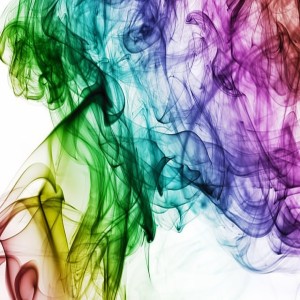Evaluating the color stability of 3D-printed resins against various solutions

Accepted: 15 June 2023
HTML: 12
All claims expressed in this article are solely those of the authors and do not necessarily represent those of their affiliated organizations, or those of the publisher, the editors and the reviewers. Any product that may be evaluated in this article or claim that may be made by its manufacturer is not guaranteed or endorsed by the publisher.
The purpose of this study was to investigate the effect of different solutions on the optical behavior of two types of 3D-printed resin (Detax and Asiga). The samples were randomly divided into 4 groups of cola, orange juice, tea and artificial saliva (control group) in the form of 14 x 10 mm blocks with a thickness of 1.5 ± 0.3 mm (10 samples in each group). By spectrophotometric device, the color of the examined samples was recorded in the CIE system and in three parameters *L (brightness), a* (red-green) and b* (blue-yellow) as the initial record. The color difference of the samples was recorded on 7 and 30 days after immersion as a secondary record. After that, using the formula, the color difference (ΔE) were calculated. T-test also was used to analyze the data. There was no significant difference between the amount of ΔE on 7th and 30th days after exposure to artificial saliva and cola and on 7th days after exposure to orange juice and tea. But on the 30th day, a significant difference was found in orange juice and tea drinks (p<0.05), so that the value of ΔE in Asiga printer was lower than Detax. ΔE changes in orange juice solution were more than other drinks. On the 30th day of immersion in tea drinks and orange juice, Asiga printer had significantly less color difference than Detax printer.
Shayegh, S. S., Hakimaneh, S. M. R., Derakhshi, H.. Three-Dimensional Printers and Their Application in Dental Prostheses. J.Mashhad Dental School. 2022; 46(2), 112-134.
Heydari B, Vafaee F, Torkan A. Effect of Repeated Firings on the Color of Dental Ceramics and Their Color Stability Submitted to Colored Solution. Avicenna J Clin Med 2012; 19 (2):58-65.
Ertaş E, Güler AU, Yücel AC, Köprülü H, Güler E. Color stability of resin composites after immersion in different drinks. Dent Mater J. 2006 Jun;25(2):371-6. PMID: 16916243. DOI: https://doi.org/10.4012/dmj.25.371
Guler AU, Yilmaz F, Kulunk T, Guler E, Kurt S. Effects of different drinks on stainability of resin composite provisional restorative materials. J Prosthet Dent. 2005 Aug;94(2):118-24. PMID: 16046965. DOI: https://doi.org/10.1016/j.prosdent.2005.05.004
Spina DR, Grossi JR, Cunali RS, Baratto Filho F, da Cunha LF, Gonzaga CC, Correr GM. Evaluation of Discoloration Removal by Polishing Resin Composites Submitted to Staining in Different Drink Solutions. Int Sch Res Notices. 2015 Aug 20;2015:853975. PMID: 27347551; PMCID: PMC4897394. DOI: https://doi.org/10.1155/2015/853975
Spina DR, Grossi JR, Cunali RS, Baratto Filho F, da Cunha LF, Gonzaga CC, Correr GM. Evaluation of Discoloration Removal by Polishing Resin Composites Submitted to Staining in Different Drink Solutions. Int Sch Res Notices. 2015 Aug 20;2015:853975. PMID: 27347551; PMCID: PMC4897394. DOI: https://doi.org/10.1155/2015/853975
Song SY, Shin YH, Lee JY, Shin SW. Color stability of provisional restorative materials with different fabrication methods. J Adv Prosthodont. 2020 Oct;12(5):259-264. Epub 2020 Oct 26. PMID: 33149846; PMCID: PMC7604238. DOI: https://doi.org/10.4047/jap.2020.12.5.259
Haynie AS, English JD, Paravina RD, Moon A, Hanigan J, Abu Al Tamn MA, Kasper FK. Colour stability of 3D-printed resin orthodontic brackets. J Orthod. 2021 Sep;48(3):241-249. Epub 2021 Mar 15. PMID: 33719707. DOI: https://doi.org/10.1177/14653125211001079
Lee EH, Ahn JS, Lim YJ, Kwon HB, Kim MJ. Effect of post-curing time on the color stability and related properties of a tooth-colored 3D-printed resin material. J Mech Behav Biomed Mater. 2022 Feb; 126:104993. 104993. Epub 2021 Nov 24. PMID: 34871954. DOI: https://doi.org/10.1016/j.jmbbm.2021.104993
Aguiar FH, Georgetto MH, Soares GP, Catelan A, Dos Santos PH, Ambrosano GM, Figueroba SR, Lovadino JR. Effect of different light-curing modes on degree of conversion, staining susceptibility and stain's retention using different beverages in a nanofilled composite resin. J Esthet Restor Dent. 2011 Apr;23(2):106-14. PMID: 21477037 DOI: https://doi.org/10.1111/j.1708-8240.2011.00406.x
Khatri A, Nandlal B. Staining of a Conventional and a Nanofilled Composite Resin Exposed in vitro to Liquid Ingested by Children. Int J Clin Pediatr Dent. 2010 Sep-Dec;3(3):183-8. Epub 2010 Sep 15. PMID: 27616840; PMCID: PMC4993824. DOI: https://doi.org/10.5005/jp-journals-10005-1074i
Köroğlu A, Sahin O, Dede DÖ, Yilmaz B. Effect of different surface treatment methods on the surface roughness and color stability of interim prosthodontic materials. J Prosthet Dent. 2016 Apr;115(4):447-55. Epub 2015 Dec 23. PMID: 26723092. DOI: https://doi.org/10.1016/j.prosdent.2015.10.005
Ardu S, Braut V, Gutemberg D, Krejci I, Dietschi D, Feilzer AJ. A long-term laboratory test on staining susceptibility of esthetic composite resin materials. Quintessence Int. 2010 Sep;41(8):695-702. PMID: 20657860.
Lin WS, Harris BT, Pellerito J, Morton D. Fabrication of an interim complete removable dental prosthesis with an in-office digital light processing three-dimensional printer: A proof-of-concept technique. J Prosthet Dent. 2018 Sep;120(3):331-334. Epub 2018 Apr 30. PMID: 29724559.. DOI: https://doi.org/10.1016/j.prosdent.2017.12.027
Catelan A, Briso AL, Sundfeld RH, Goiato MC, dos Santos PH. Color stability of sealed composite resin restorative materials after ultraviolet artificial aging and immersion in staining solutions. J Prosthet Dent. 2011 Apr;105(4):236-41. PMID: 21458648. DOI: https://doi.org/10.1016/S0022-3913(11)60038-3
Hasani-Tabatabaei M, Yassini E, Moradian S, Elmamooz N. Color stability of dental composite materials after exposure to staining solutions: a spectrophotometer analysis. J Iran Dent Assoc 2009, 21(1): 69-78.
Hipólito AC, Barão VA, Faverani LP, Ferreira MB, Assunção WG. Color degradation of acrylic resin denture teeth as a function of liquid diet: ultraviolet-visible reflection analysis. J Biomed Opt. 2013 Oct;18(10):105005. PMID: 24126696. DOI: https://doi.org/10.1117/1.JBO.18.10.105005
Bagheri R, Burrow MF, Tyas M. Influence of food-simulating solutions and surface finish on susceptibility to staining of aesthetic restorative materials. J Dent. 2005 May;33(5):389-98. Epub 2004 Dec 9. PMID: 15833394 DOI: https://doi.org/10.1016/j.jdent.2004.10.018
Copyright (c) 2023 the Author(s)

This work is licensed under a Creative Commons Attribution-NonCommercial 4.0 International License.
PAGEPress has chosen to apply the Creative Commons Attribution NonCommercial 4.0 International License (CC BY-NC 4.0) to all manuscripts to be published.


 https://doi.org/10.4081/ejtm.2023.11493
https://doi.org/10.4081/ejtm.2023.11493



